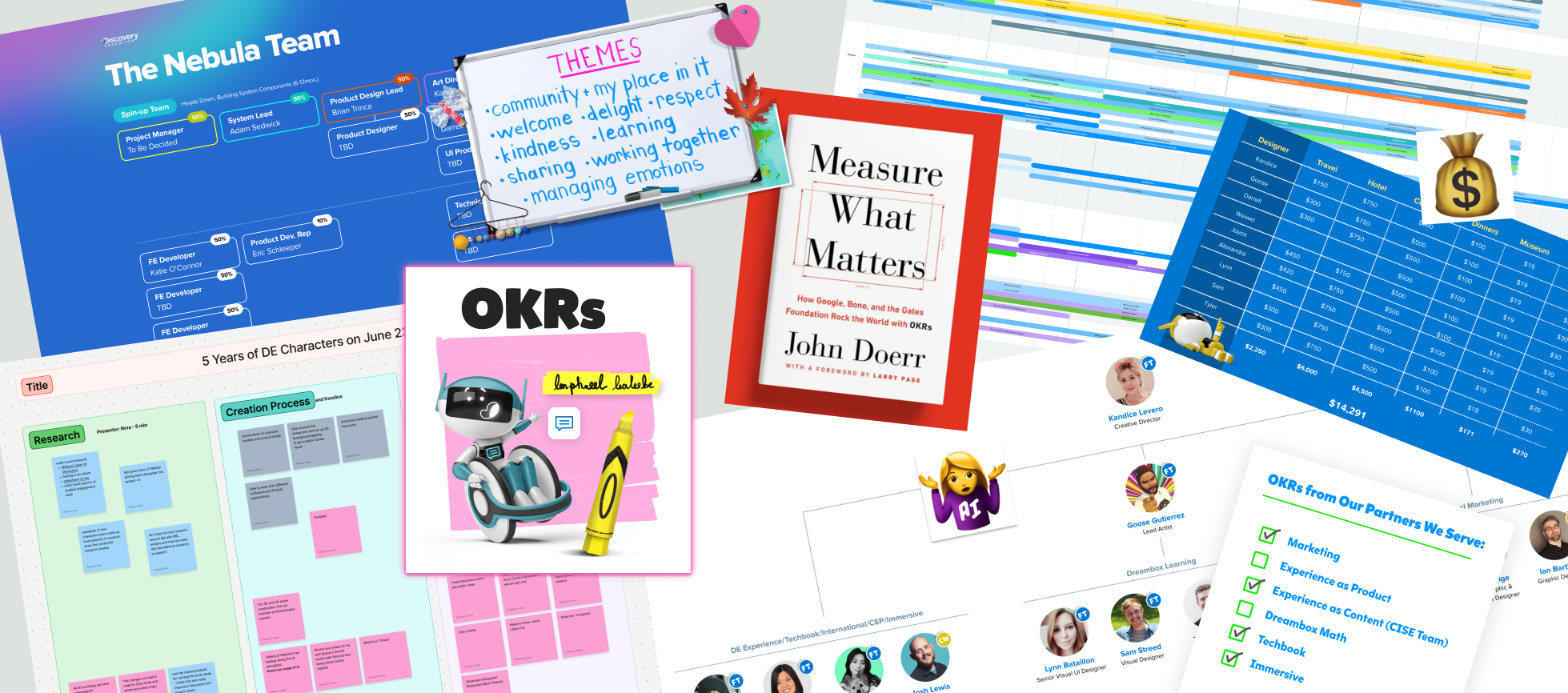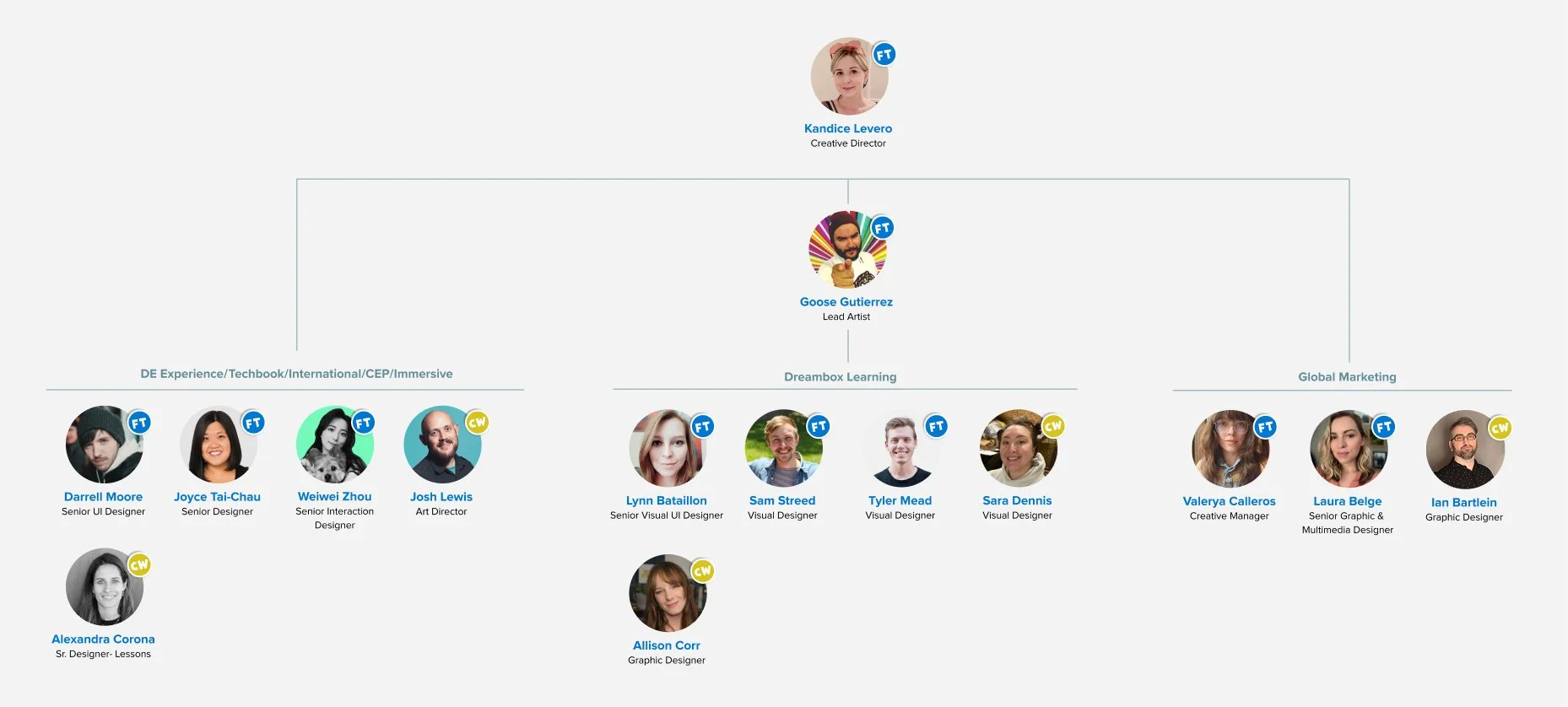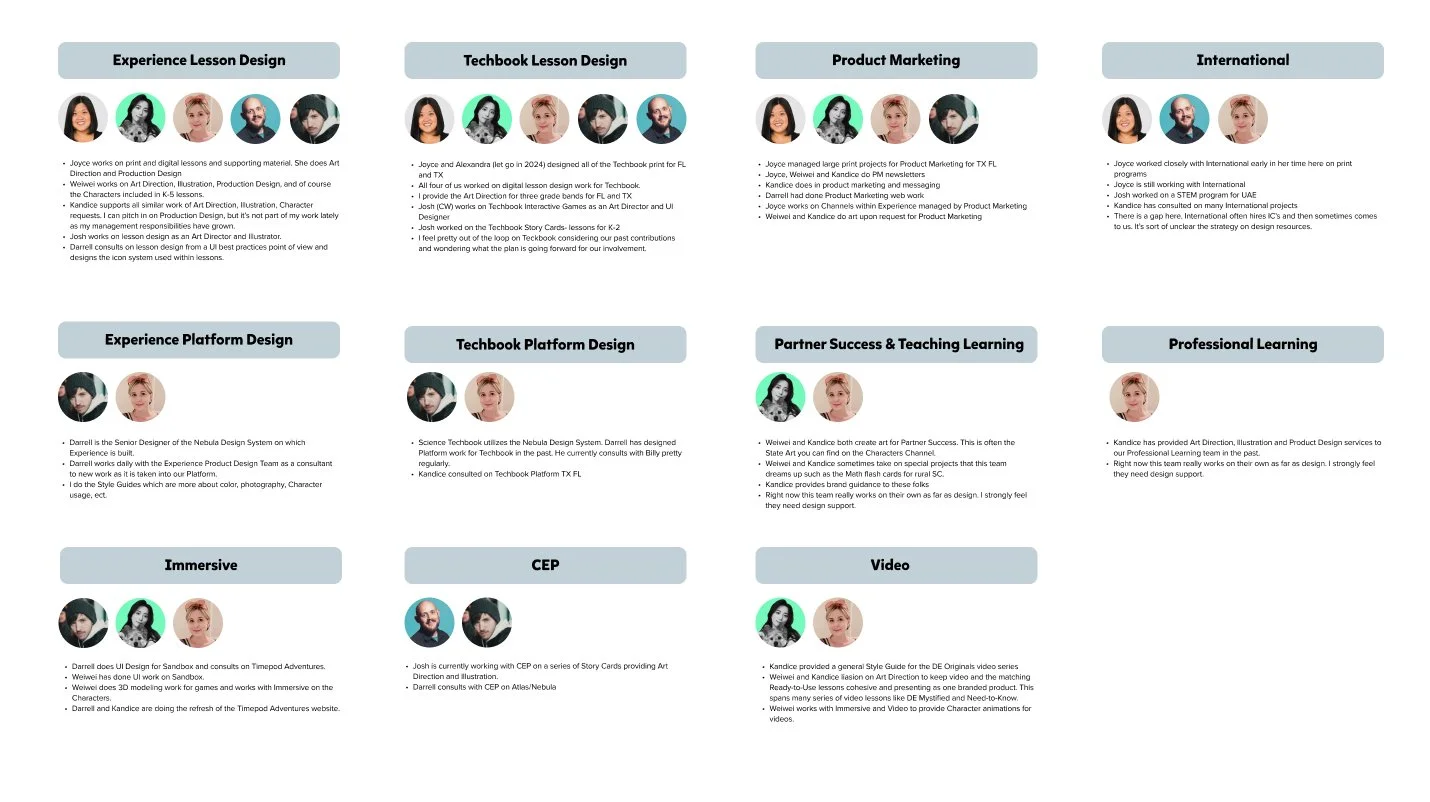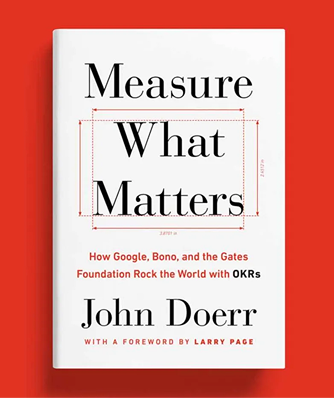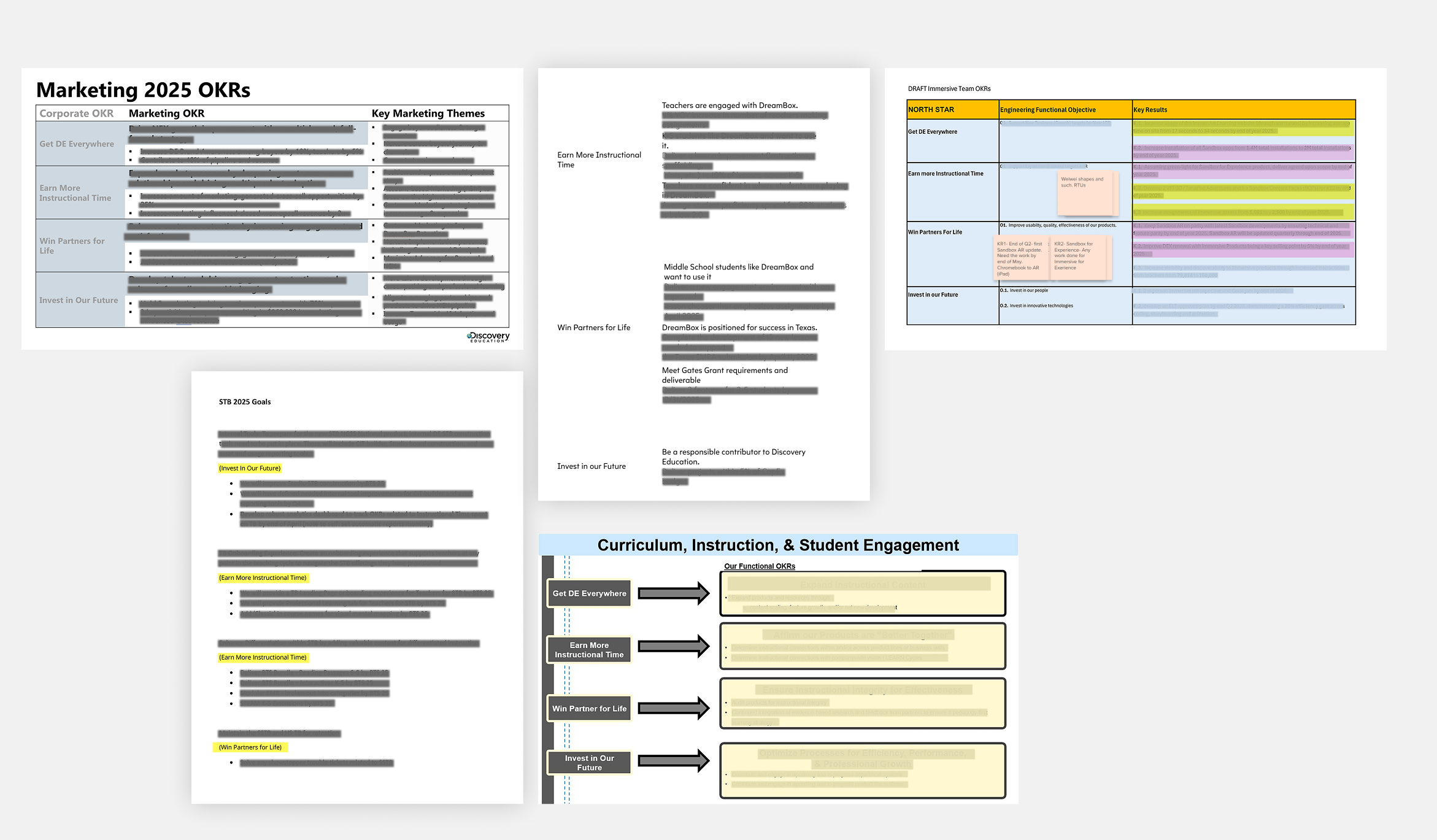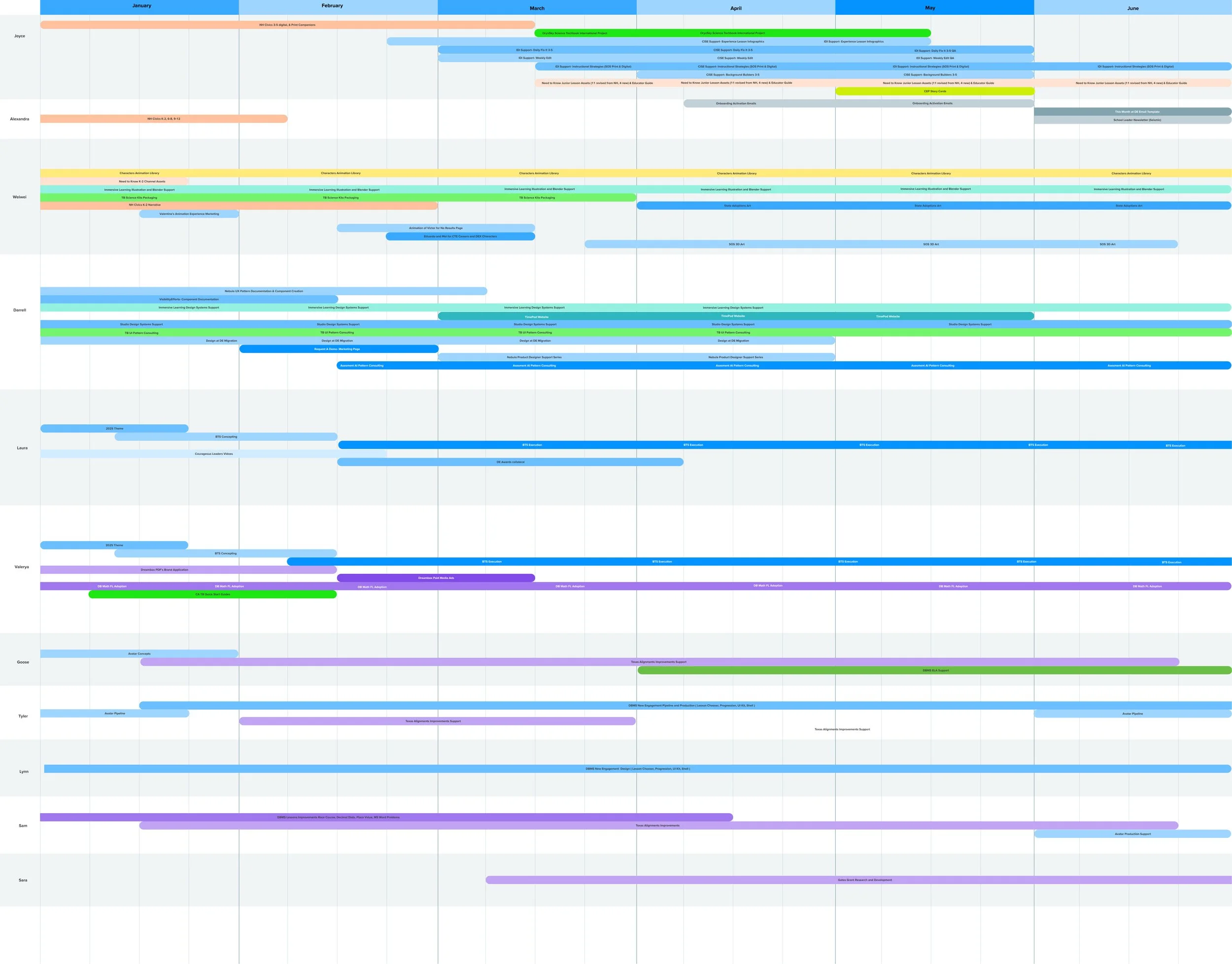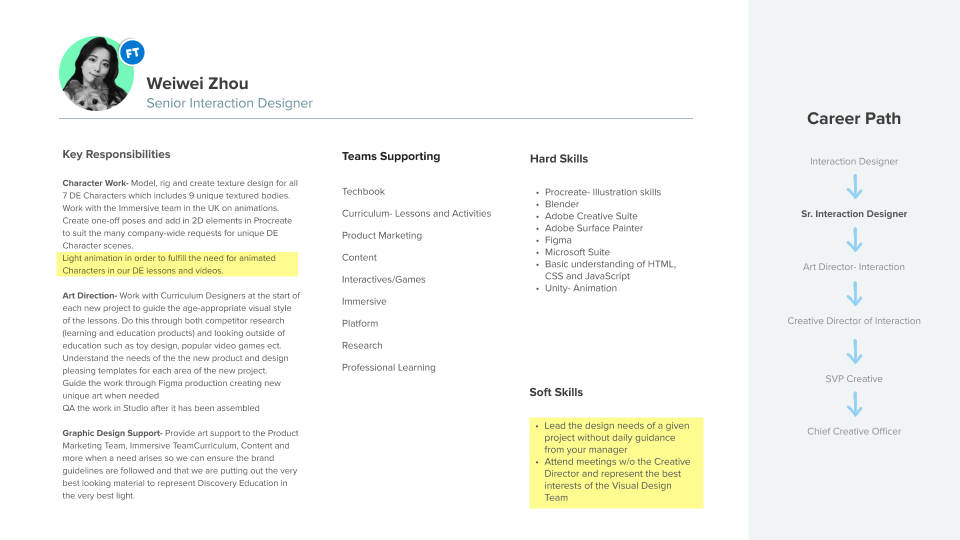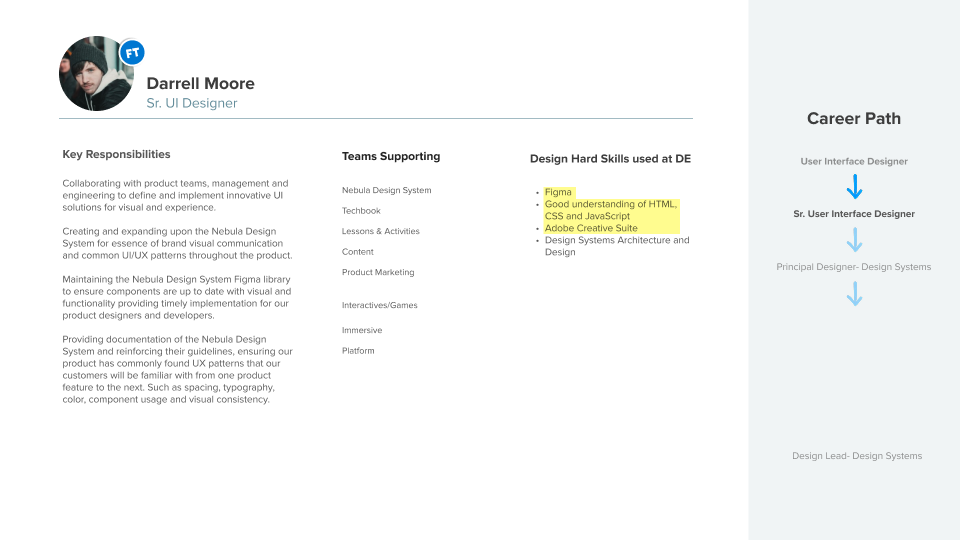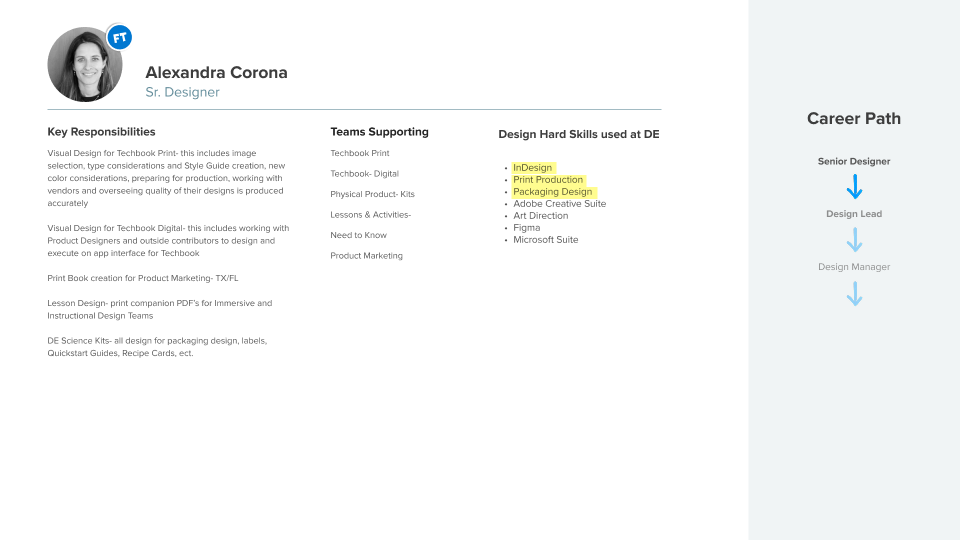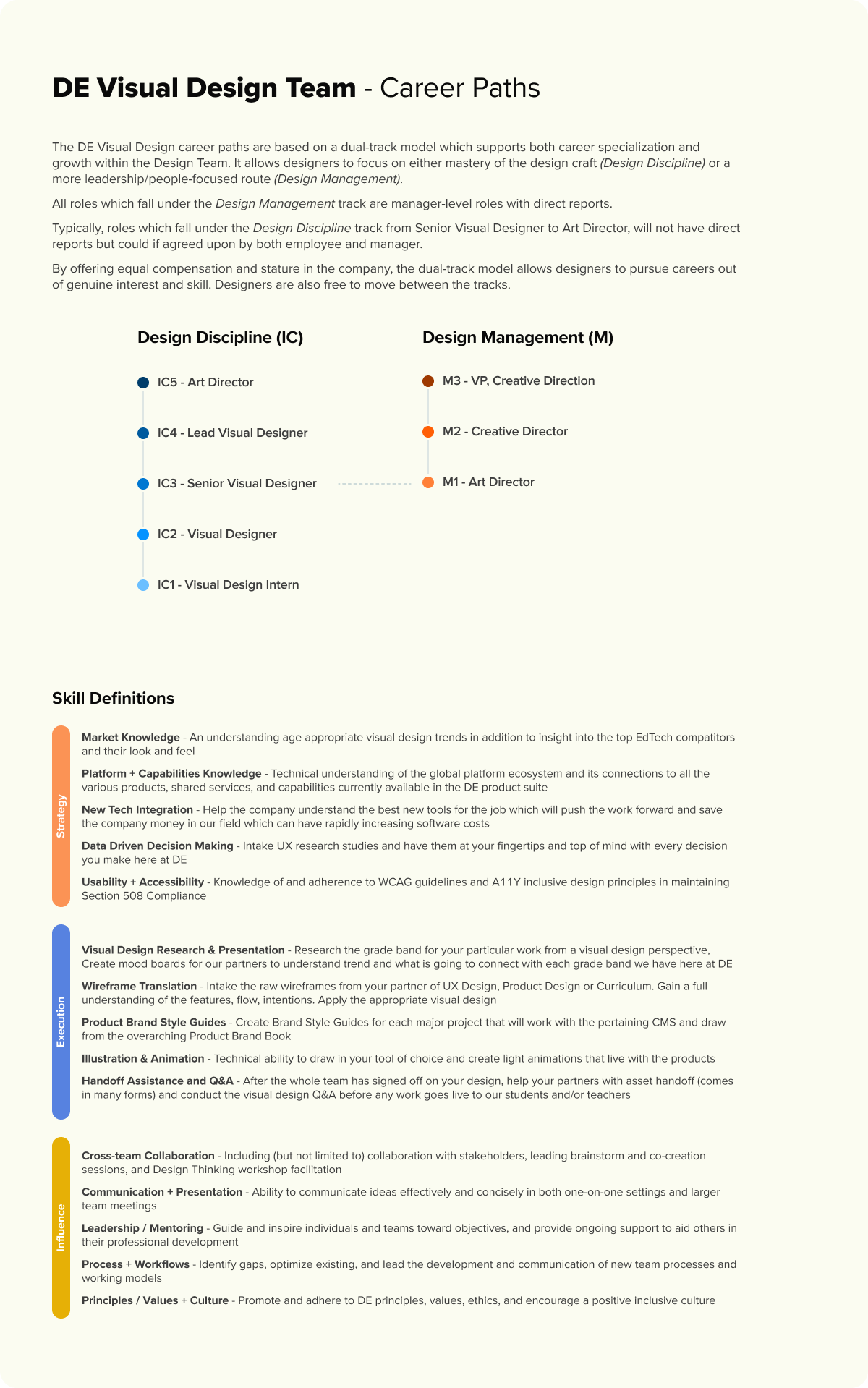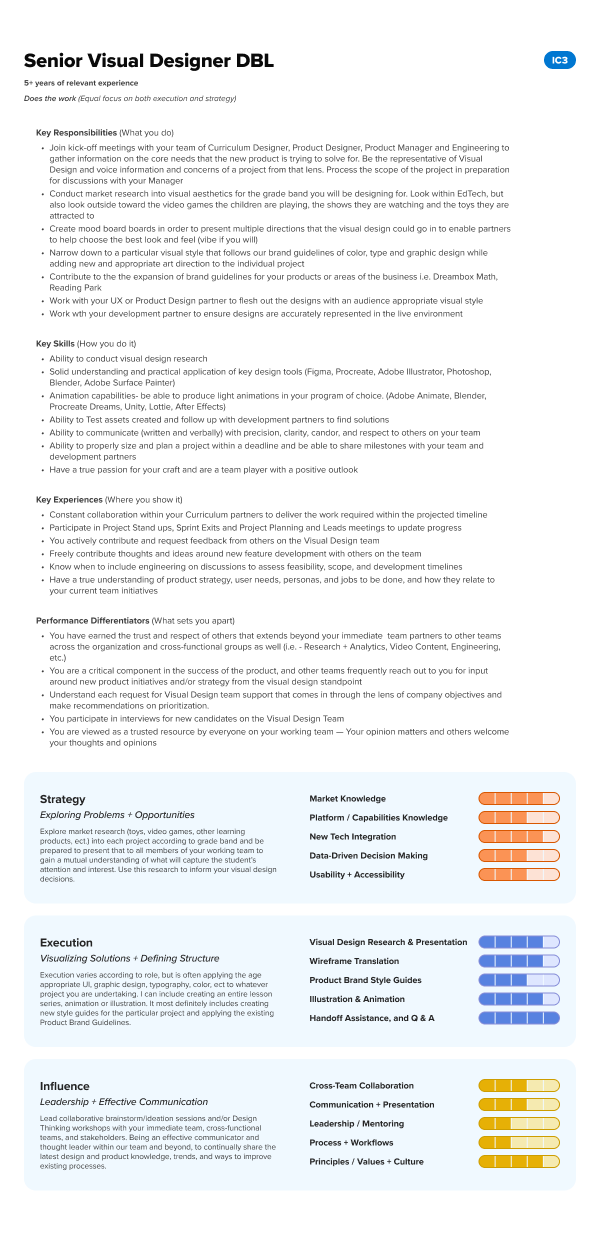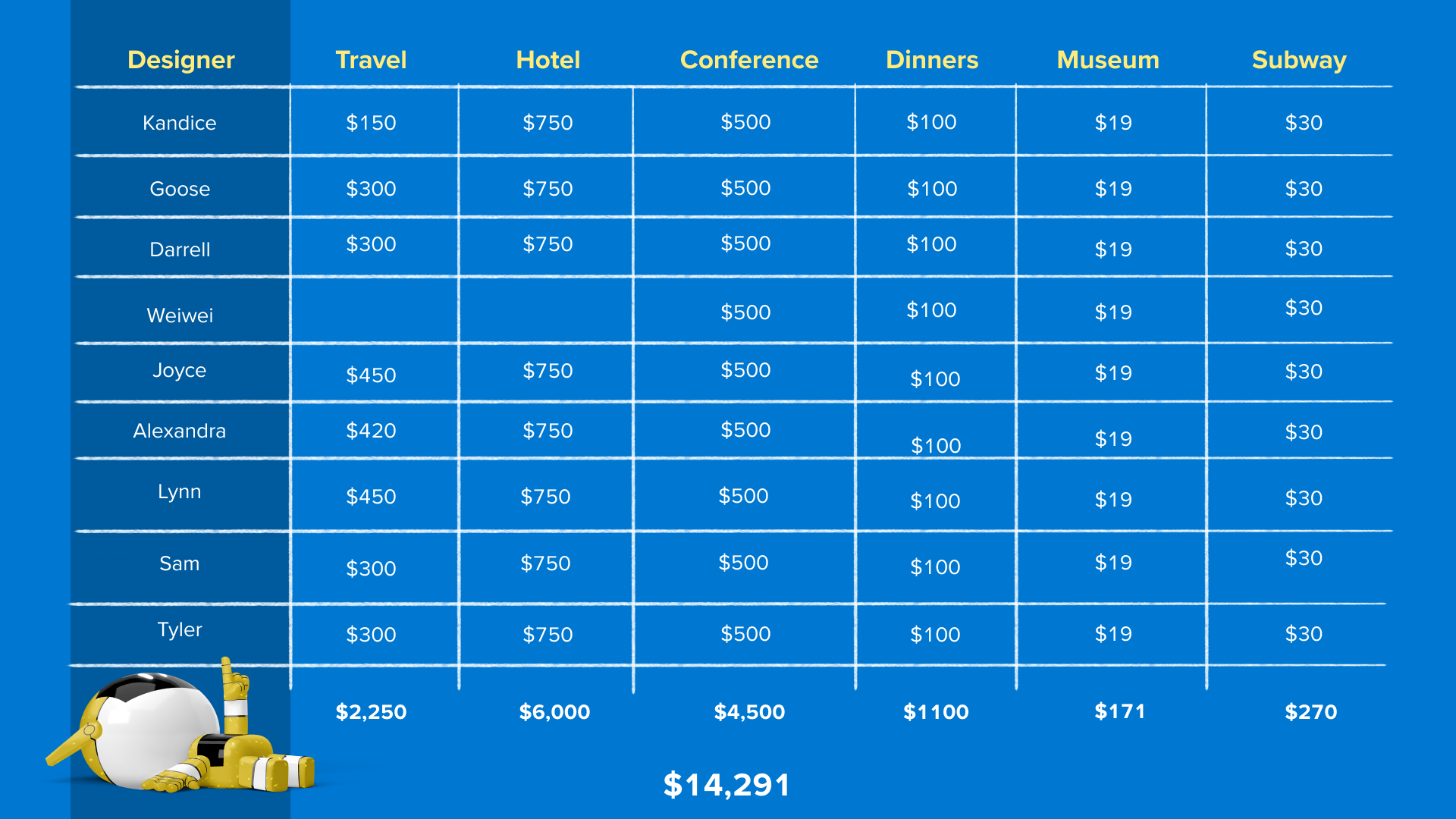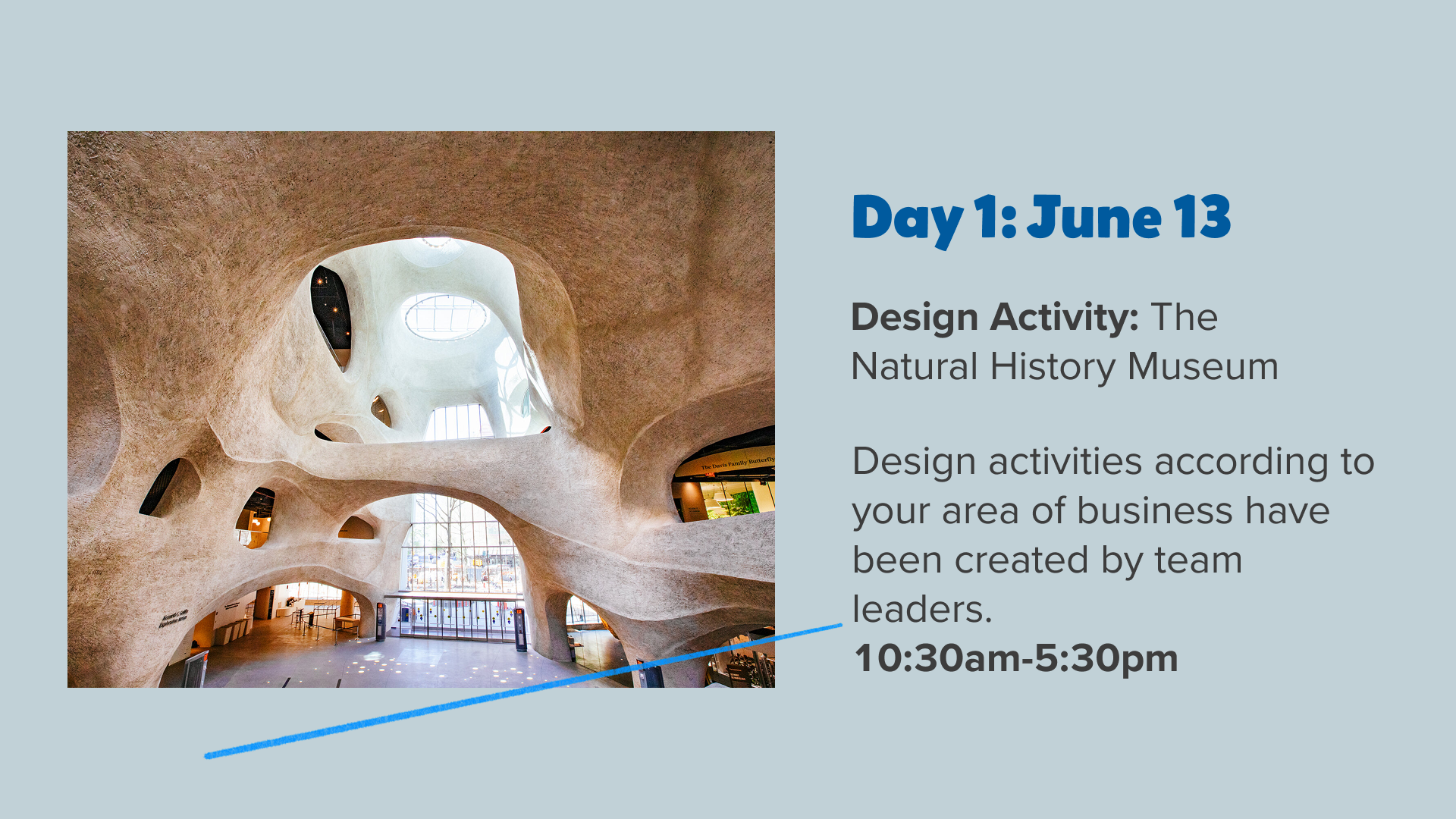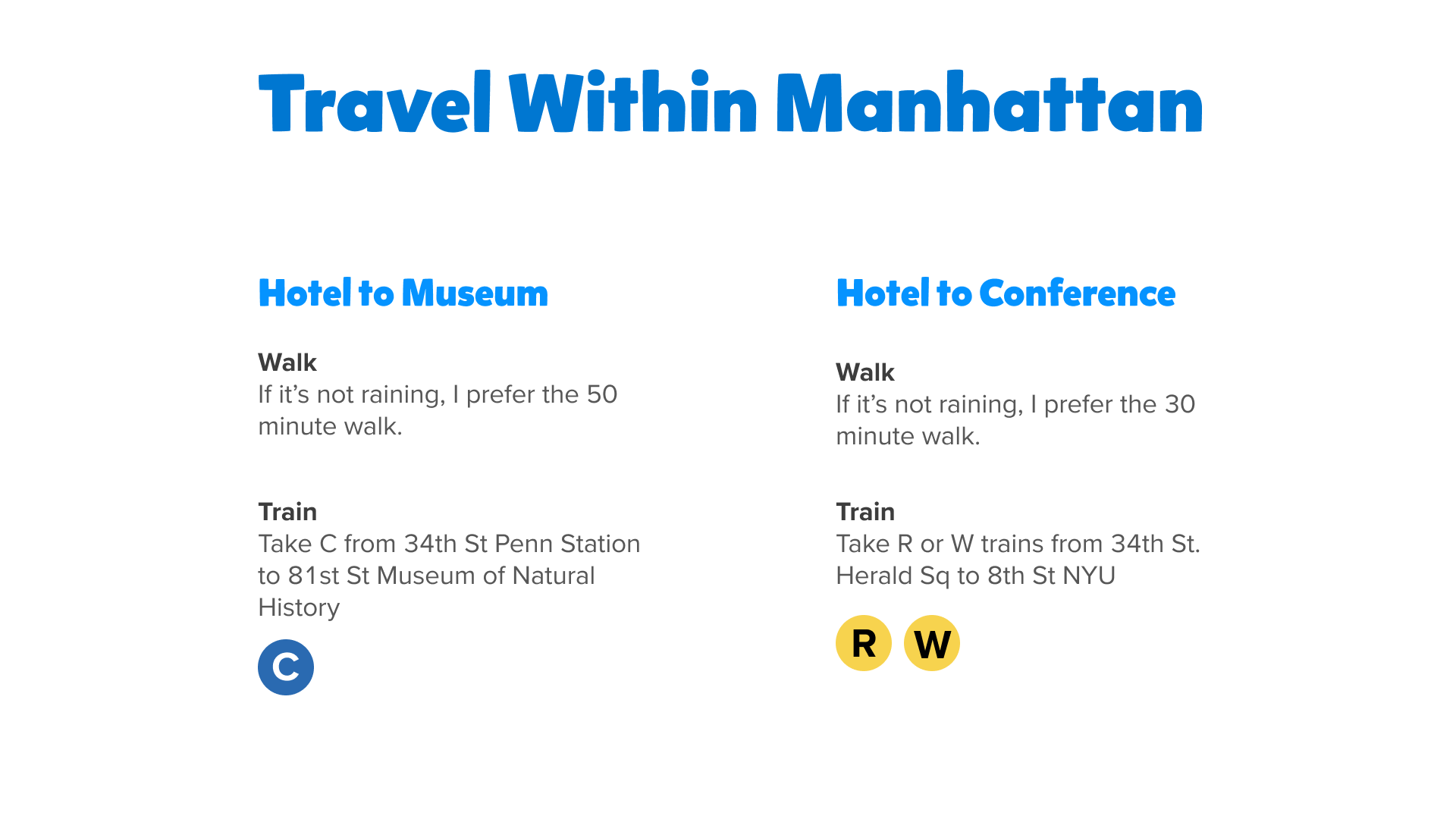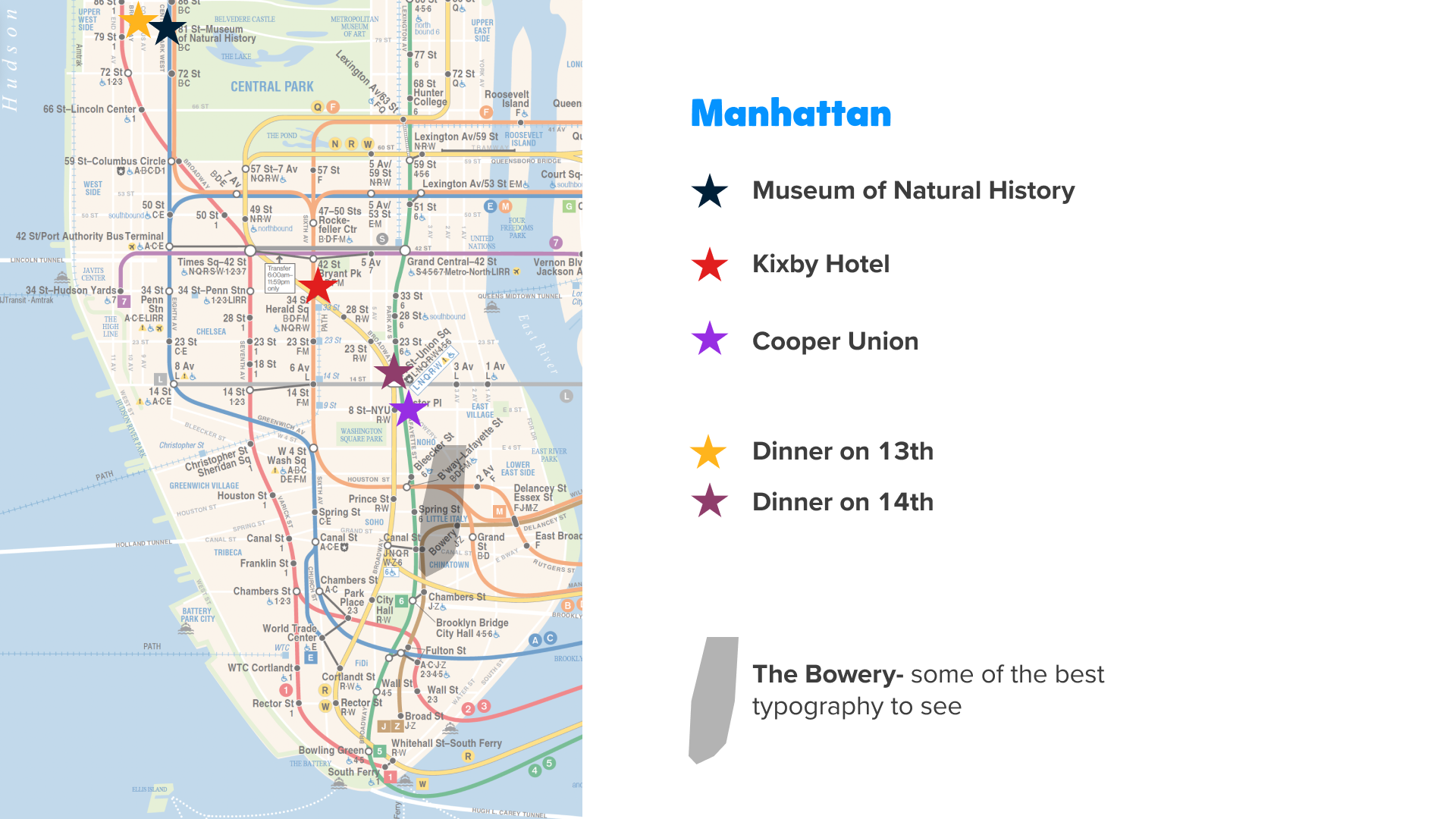When I stepped into my role as Creative Director at Discovery Education, I was tasked with building a design organization capable of uniting a rapidly expanding company. Over five years, I grew and led a 15+ person Brand and Product Design team, establishing the systems, culture, and creative standards that drove consistency and innovation across 10+ acquired EdTech brands. I implemented OKRs and design operations that improved efficiency by 40%, defined Nebula with my team—the company’s design system ensuring cohesion across every touchpoint—and made mentorship central to our success. I focused on growing emerging designers into confident leaders and strengthening our connection through offsite trips, workshops, and shared creative rituals. What follows is how I built the team, scaled the practice, and redefined how Discovery Education presents itself to millions of educators and students worldwide.
Design Organization Leadership
My Organization
As the company went through mergers and acquisitions I took on teams from new companies in addition to taking over the responsibility of the global marketing team.
Above is what the organization that I built looked like day-to-day while I also scaled up or down contract talent as needs arose.
Define
A clear statement of the purpose and value of my team helped kick off conversations with everyone from engineering to marketing leadership as the company expanded.
Service Team Mentality
Design is a service team first. As the company grew, it was important to educate new employees ranging from Product Operations Specialists to SVPs of Product on whom we serve cross-functionally. Creating and updating charts like this helped onboard senior executives.
OKRs
Beginning in Q1 of 2023 Discovery Education began implementing Objectives and Key Results at the Executive level. We received five major Objectives, but not enough direction as to what OKRs were, or how to explain the value to our teams actual day-today design work.
I researched the history of OKRs and became deeply interested in rolling this out exactly as it had been done at Intel by Andy Grove- not redefining, but running the program as it was designed to be implemented.
I read the defining book on OKRs and took the online course offered at Measure What Matters.
Implementing OKRs changed the way I prioritized incoming work and revitilized my team’s sense of purpose in a way I had not yet experienced. Below I will lay out my methods of tying each job no matter the size to company goals.
Making Sense of it All
When OKRs were first introduced not all functional business teams were on-boarded, and there was no consistent format to present each group’s OKRs.
First I obtained and reviewed each document with the business owners and noted where our work would fit in as a team in service to the Functional Teams.
On the right you can see how OKRs looked as they came in. Clearly we needed a consistent way to intake and organize around these many teams needs.
(some text blurred to protect company info)
Below you can see how I created a common language and format for each Objective, Key Result, and then our own team “Initiative” further breaking that down into major tasks for the designers.
Below again is the common format to attach a major initiative to that team’s OKRs and then lay out the design tasks.
On the left you can see one Functional Team’s OKRs with my notes on where my team would be supporting the needs.
(some text blurred to protect company info)
Here is a different Functional Team’s OKRs. As you can see it’s in a quite different format, so creating our own systems to intake these for 15 team members and then attach our own alignment to each unit’s business goals was very helpful.
(some text blurred to protect company info)
Unifying Gantt Charts
Work came in from so many types of teams, and they were not using a unified set of project management tools. Some used Asana, others Jira, and some used none at all.
I developed a unique Gantt Chart in Figma that I used to organize the entire organization’s time and allocations broken into 2 quarters per chart.
This chart was adopted by a Senior PM who was facing a similar issue. I was glad to share it!
Roles and Career Paths
Early on I defined each role with key responsibilities, major teams the role supports, skills and a rudimentary career path early on. Below are a few examples.
Career Paths Expansion
As my team expanded and I took on leadership of new teams and role types, I developed this Growth Framework along with my co-leaders in the greater Design Org to cover the major responsibilities expected of the team members and help guide them through levels ranging from potential through mastery.
Career Structure Outlined
With the Growth Framework in place I was able to lay out the levels of the career paths available considering the value of those who chose to be individual contributors and those who had an interest in moving on to design management.
On the left you can see both the framework of the career paths and the hard and soft skills defined. These would be weighted differently for each job description.
Three Career Paths
Below are three examples from the career paths I developed for my organization. These were reviewed with our human resources team, adjusted with feedback and adopted.
Team Cohesion & Bonding
When budget allowed, I organized a yearly trip for my organization. This was vital to helping new members feel included and keep team spirits up. I designed the trips around a central design event and then added additional activities to keep folks engaged and getting to know each other better.
Remote can be tough, this really helped make everyone feel like one team as we experienced mergers, acquisitions and reorgs.
